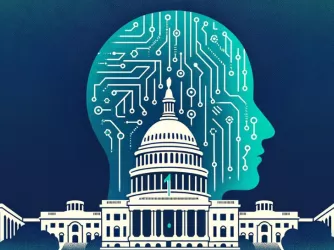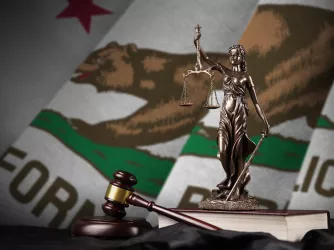Table of Contents
Impact Trumps Intent, and Other Discouraging Statements on Free Speech at U. of Iowa

The more that comes to light about the University of Iowa’s (UI’s) handling of a recent controversy in which it censored and denounced an anti-racist statue in the shape of a Ku Klux Klan cloak, the less reason I have to be confident that the university has any grasp on its obligation to uphold the First Amendment. Recently, I wrote about The Gazette’s (Cedar Rapids, Iowa) revelations that UI President Sally Mason solicited input from students on an all-campus email statement apologizing for the art’s perceived offensiveness. While soliciting student input on presidential statements isn’t an inherently objectionable idea, I wrote:
[W]hat does it say about UI’s priorities—and its pitiful grasp of the basics of free speech—that it’s entitling certain students to input on a statement denouncing [faculty artist Serhat] Tanyolacar’s work without giving even the slightest nod to its First Amendment obligations as a public institution?
Now, the Iowa City Press-Citizen has done some digging of its own, uncovering some disheartening and enraging statements from Tom Rocklin, UI’s Vice President for Student Life. It was Rocklin who sent the initial statement denouncing Tanyolacar’s art on December 5. That ill-advised, prejudicial, and tremendously damaging statement proclaimed that there was “no room for divisive, insensitive, and intolerant displays on this campus”—ignoring the matter of Tanyolacar’s First Amendment rights, which without question protect exactly the kind of expression that UI publicly denounced.
According to the Press-Citizen, Rocklin and other UI officials responsible for this statement got some deserved blowback from UI faculty for their tone-deaf disregard for Tanyolacar’s First Amendment rights. Most notably, and commendably, John Beldon Scott, director of UI’s School of Art & Art History, pointed out that UI’s actions did a tremendous disservice to the campus community:
In one particularly pointed exchange the afternoon of Dec. 5, John Beldon Scott ... emailed Rocklin and [Vice President for Strategic Communication Joe] Brennan and asked whether they actually had examined Tanyolacar's sculpture before denouncing it.
"Are you aware that the work was clearly — to anyone who actually looked at it — an indictment of racial injustice in the U.S.?" Scott wrote in an email. "That it was removed because the placement was unauthorized is understandable, but for an official email to go out implying that the work was racist in meaning does a disservice to our educational mission. A valuable learning moment for the university community — and particularly the student body — has been lost."
Brennan responded at 3:22 p.m: "John, with all due respect that moment was lost when the artist failed to seek permission to use the common space. We could've helped anticipate the misunderstandings, and to frame this in a way that would've allowed for productive discourse."
Scott replied soon after, "Thanks, Joe. I think it would be important to interpret the work correctly. The UI statement gives a false impression about the meaning of the work of art and that contradicts our reason for being an institution of higher learning."
It is also clear from the Press-Citizen’s coverage that before emailing the campus to condemn the work, Rocklin visited the site himself and should have been able to ascertain its anti-racist intent. But you wouldn’t be able to tell this from the statement itself, which makes no mention of the artwork’s intent. What’s more, in later emails Rocklin demonstrated a willingness to censor expression solely on the basis of audience response:
"I have learned a lot from listening to students over the last few days," Rocklin wrote to UI law professor Alexander Somek on Dec. 9. "While I understood that I would view the piece through the lens of my own privilege, hearing the students pour out their hearts as they described the fear they felt when the saw the piece was a visceral reminder that intent is only part of the question … and sometimes impact trumps intent."
[Emphasis added.]
This is, to put it mildly, alarming. As far as the First Amendment is concerned, impact most decidedly does not trump intent. Free speech rights would be essentially nonexistent if it did, as our speech would perennially be conditioned on the tolerance of the most sensitive members of our audience. The university’s job is not to protect the feelings of those who might be offended by another’s speech—it’s to protect the speaker from those who would censor his or her speech due to its perceived offensiveness.
The Press-Citizen also reports a December 5 email exchange in which Rocklin responded to an inquiry by stating, “All I can say is that the students were not just hurt. Some of them were genuinely afraid that the KKK was on campus and might harm them.” No doubt Tanyolacar’s artwork offended some on the UI campus. But let’s not kid ourselves: The notion that this signaled an imminent threat by the KKK is nonsense. Even more galling is that if Rocklin had already been to the Pentacrest to see the work and get a sense of the artist’s intent (which shouldn’t have been hard, because Tanyolacar himself was in the vicinity of the artwork just about the whole time it was up), then Rocklin knew it was nonsense and could have reassured students that no threat existed. Subjectively feeling threatened does not equate actually to being threatened, and it does not automatically entitle one to corrective action. Universities disserve their students when they fail, or refuse, to make this clear.
The emails brought to light by the Press-Citizen only further illustrate what UI’s priorities have been in this case from day one. The rights of UI students to be free from the offense caused by others’ controversial expression is priority one. Serhat Tanyolacar’s First Amendment rights run a distant second, if indeed they’re given a thought at all.
Recent Articles
FIRE’s award-winning Newsdesk covers the free speech news you need to stay informed.

O holy fight: New Hampshire Satanic Temple statue threatened by more than vandals

California and other states are rushing to regulate AI. This is what they’re missing

One day after FIRE lawsuit, Congress passes changes to filming permits in national parks
